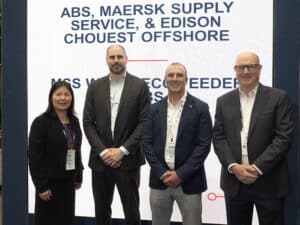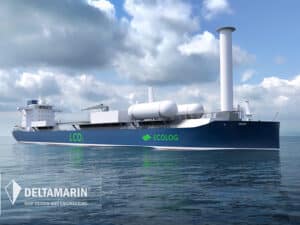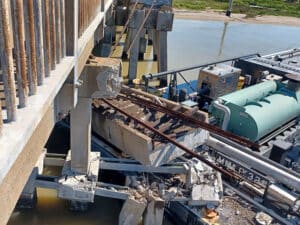
Planned Oregon and Gulf of Maine auctions open new opportunities for floating offshore wind
Written by Nick Blenkey
BOEM Director Elizabeth Klein says Oregon and Gulf of Maine "commitment to exploring the potential for offshore wind development from coast to coast.”
The U.S. Department of the Interior has announced two proposals for offshore wind energy auctions off the coast of Oregon and in the Gulf of Maine. Proposed by the Bureau of Ocean Energy Management (BOEM) the sales have the potential to generate more than 18 gigawatts of offshore wind energy, enough to power more than six million homes. They also underscore the need to develop floating offshore wind solutions,
“BOEM’s combined announcement solidifies two new regional markets for floating offshore wind, balancing the development of this industry sector across both coasts,” said Liz Burdock, CEO of the Oceantic Network. “New lease areas in Oregon will support a further buildout of the West Coast’s regional supply chain, adding strength to California projects. And in the Gulf of Maine, this new 15 GW potential will drive the creation of a floating offshore wind supply chain on the East Coast.”
“As we move forward with offshore wind energy in Oregon and the Gulf of Maine, the Bureau of Ocean Energy Management remains dedicated to close collaboration with our government partners and key stakeholders,” said BOEM Director Elizabeth Klein. “We’re excited to unveil these proposed sales and emphasize our commitment to exploring the potential for offshore wind development from coast to coast.“
The proposed sales follow a multi-year planning process that has included engagement with tribes, local communities, federal and state agencies, ocean users, and stakeholders. BOEM’s partnership with the National Oceanic and Atmospheric Administration’s National Centers for Coastal Ocean Science has enhanced this process and incorporated the best available ocean resource information to inform wind energy areas. In identifying these areas, BOEM prioritized avoidance of offshore fishing grounds and identification of vessel transit routes, while retaining sufficient acreage to support offshore wind energy goals.
GULF OF MAINE
Maine has long been working on floating offshore wind technology and the first-ever offshore wind energy auction in the Gulf of Maine Wind Energy Area would include eight lease areas offshore Maine, Massachusetts and New Hampshire, totaling nearly one million acres, which have the potential to generate approximately 15 GW of clean, renewable energy and power more than five million homes.
BOEM is proposing to conduct simultaneous auctions for each of the eight lease areas using multiple-factor bidding. BOEM is seeking comment on providing bidding credits to bidders that commit to supporting workforce training programs or supply chain development, or a combination of both, as well as a credit for a fisheries compensatory mitigation fund. BOEM is also seeking comment on potential lease stipulations regarding vessel transit and baseline environmental monitoring. Like recent leases in other regions, BOEM is proposing lease stipulations to ensure that any future leaseholders consider and engage potentially affected stakeholders and communities, including tribes, historically underserved communities, and the fishing industry, early and often throughout the offshore wind energy development process.
OREGON
The proposed lease sale offshore Oregon includes two lease areas totaling 194,995 acres — one in the Coos Bay Wind Energy Area and the other in the Brookings Wind Energy Area — which have the potential to power more than one million homes with renewable energy.
Along with the proposed lease sale, BOEM has released its draft environmental review of potential impacts associated with offshore wind energy leasing activities for public review and comment.
BOEM is seeking feedback on several proposed lease stipulations that include providing bidding credits to bidders that commit to supporting workforce training programs for the floating offshore wind energy industry, developing a domestic supply chain for the floating offshore wind industry, or a combination of both. The proposal also includes providing bidding credits to bidders who commit to executing community benefit agreements with tribes, local communities, ocean users, or stakeholder groups expected to be affected by potential impacts from activities resulting from lease development.




